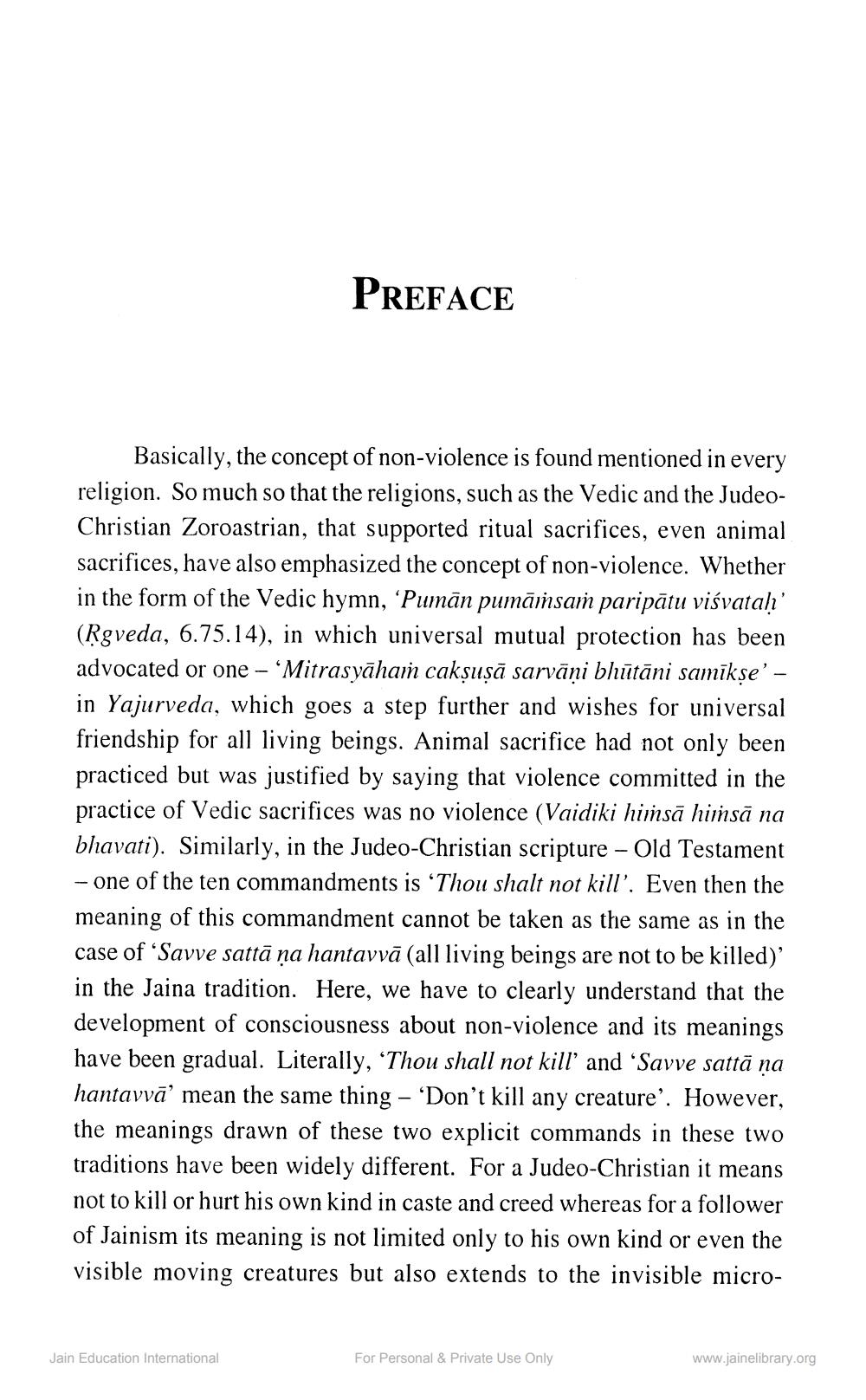________________
PREFACE
Basically, the concept of non-violence is found mentioned in every religion. So much so that the religions, such as the Vedic and the JudeoChristian Zoroastrian, that supported ritual sacrifices, even animal sacrifices, have also emphasized the concept of non-violence. Whether in the form of the Vedic hymn, ‘Pumān pumāinsam paripātu viśvata!' (Rgveda, 6.75.14), in which universal mutual protection has been advocated or one – Mitrasyāham cakṣuṇā sarvāṇi bhūtāni samīkşe'in Yajurveda, which goes a step further and wishes for universal friendship for all living beings. Animal sacrifice had not only been practiced but was justified by saying that violence committed in the practice of Vedic sacrifices was no violence (Vaidiki hiisā hiinsā na bhavati). Similarly, in the Judeo-Christian scripture - Old Testament - one of the ten commandments is ‘Thou shalt not kill”. Even then the meaning of this commandment cannot be taken as the same as in the case of 'Savve sattā ņa hantavvā (all living beings are not to be killed)' in the Jaina tradition. Here, we have to clearly understand that the development of consciousness about non-violence and its meanings have been gradual. Literally, ‘Thou shall not kill' and 'Savve sattā ņa hantavvā' mean the same thing - ‘Don't kill any creature'. However, the meanings drawn of these two explicit commands in these two traditions have been widely different. For a Judeo-Christian it means not to kill or hurt his own kind in caste and creed whereas for a follower of Jainism its meaning is not limited only to his own kind or even the visible moving creatures but also extends to the invisible micro
Jain Education International
For Personal & Private Use Only
www.jainelibrary.org




